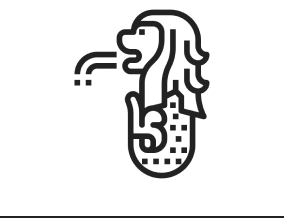When it comes to making smart financial decisions, Financial Planning and Analysis (FP&A) plays a big role in helping businesses grow. Whether you’re a startup, a growing company, or a large corporation, having the right financial model is key to making accurate forecasts, managing cash flow, and planning for the future.
But with so many financial models out there, how do you know which one is the right fit for your business?
In this blog, we’ll break down the key types of FP&A financial models in simple terms and help you choose the one that suits your business needs best.
What is an FP&A Financial Model?
An FP&A financial model is a tool (usually built in Excel or specialized software) that helps businesses plan, analyze, and forecast their financial performance. It combines historical data with future assumptions to estimate things like revenue, expenses, cash flow, and profit.
Think of it as a roadmap for your business finances – it helps you answer questions like:
- How much money will we make next year?
- Can we afford to hire new staff?
- What happens if sales drop by 10%?
Now, let’s explore the main types of financial models used in FP&A and where each one fits best.
1. Three-Statement Model
What it is:
The three-statement model connects your Income Statement, Balance Sheet, and Cash Flow Statement in one integrated spreadsheet.
Best for:
- Startups and small businesses
- Companies that want a basic but solid view of their financial health
Why it works:
It provides a clear picture of how money flows through your business. If you’re new to FP&A or need a reliable model for investors or lenders, this is a great starting point.
2. Budgeting and Forecasting Model
What it is:
This model focuses on setting financial goals (budgets) and predicting future results (forecasts). It often includes monthly or quarterly projections.
Best for:
- Growing companies
- Businesses looking to track performance vs. goals
Why it works:
It helps you stay on top of expenses and make sure your team is working toward revenue goals. You can update your forecast regularly as new data comes in.
3. Rolling Forecast Model
What it is:
Unlike traditional forecasts that are set once a year, a rolling forecast is updated regularly (e.g., monthly or quarterly) and always looks ahead for a set period (like the next 12 months).
Best for:
- Dynamic businesses with changing market conditions
- SaaS companies or seasonal businesses
Why it works:
Rolling forecasts give you flexibility. You can adjust your plans as you go, rather than being stuck with a static annual forecast.
4. Driver-Based Model
What it is:
This model focuses on the key drivers that impact your business, such as customer acquisition, average order value, or churn rate. You build your forecasts based on these drivers.
Best for:
- Companies with data-driven operations
- Businesses scaling quickly
Why it works:
By focusing on the inputs that really move the needle, you can make more accurate forecasts and better strategic decisions.
5. Scenario and Sensitivity Analysis Model
What it is:
This model allows you to test different “what if” scenarios. For example, what happens if your prices go up 10% or if costs double?
Best for:
- Businesses facing uncertainty or market changes
- Companies considering new investments or product launches
Why it works:
It helps you prepare for the unexpected and make risk-aware decisions. Sensitivity analysis shows which variables have the biggest impact on your bottom line.
6. DCF (Discounted Cash Flow) Model
What it is:
A DCF model estimates the value of a business based on its expected future cash flows, discounted back to today’s value.
Best for:
- Businesses seeking investment or funding
- Companies preparing for mergers or acquisitions
Why it works:
It’s a common tool used by investors and financial analysts to evaluate a company’s true worth.
7. Operational Model
What it is:
An operational model goes deep into the day-to-day activities of a business. It includes details like staffing levels, production costs, and supply chain logistics.
Best for:
- Manufacturing or logistics businesses
- Companies with complex operations
Why it works:
It helps you understand how your operations impact your finances, so you can improve efficiency and reduce costs.
How to Choose the Right Model for Your Business
Here’s a quick guide to help you pick the right model based on your business stage and goals:
| Business Stage | Recommended Model |
| Startup | Three-Statement Model, Budgeting & Forecasting |
| Growing Business | Rolling Forecast, Driver-Based Model |
| Established Company | Scenario Analysis, Operational Model |
| Seeking Investment | DCF Model, Three-Statement Model |
You can also combine models for better results. For example, a rolling forecast built on key drivers gives you both flexibility and insight.
Final Thoughts
Choosing the right FP&A financial model isn’t about finding the most complex spreadsheet — it’s about using the right tool for your business’s unique needs.
Whether you’re just starting out or planning your next big move, a good financial model helps you stay in control and plan with confidence.
If you’re unsure where to start, begin with the basics like a three-statement model and grow from there. As your business evolves, your financial modeling should too. Looking to build a solid FP&A model for your business? Talk to a financial expert at PPN Solutions to get started.

Vivek Bisht
Sr. Content Writer






